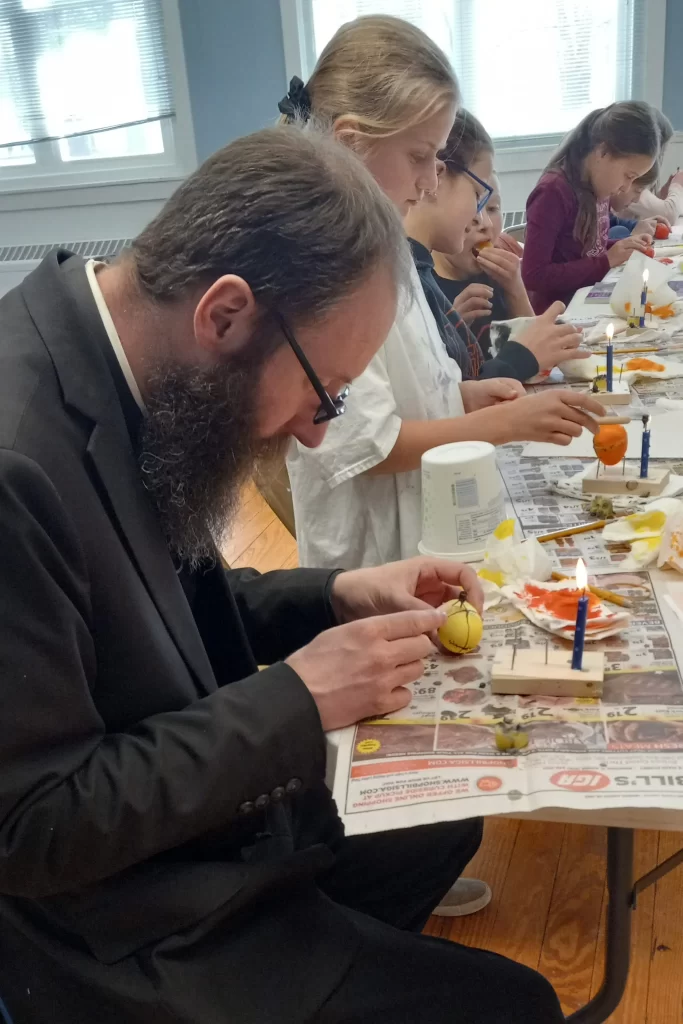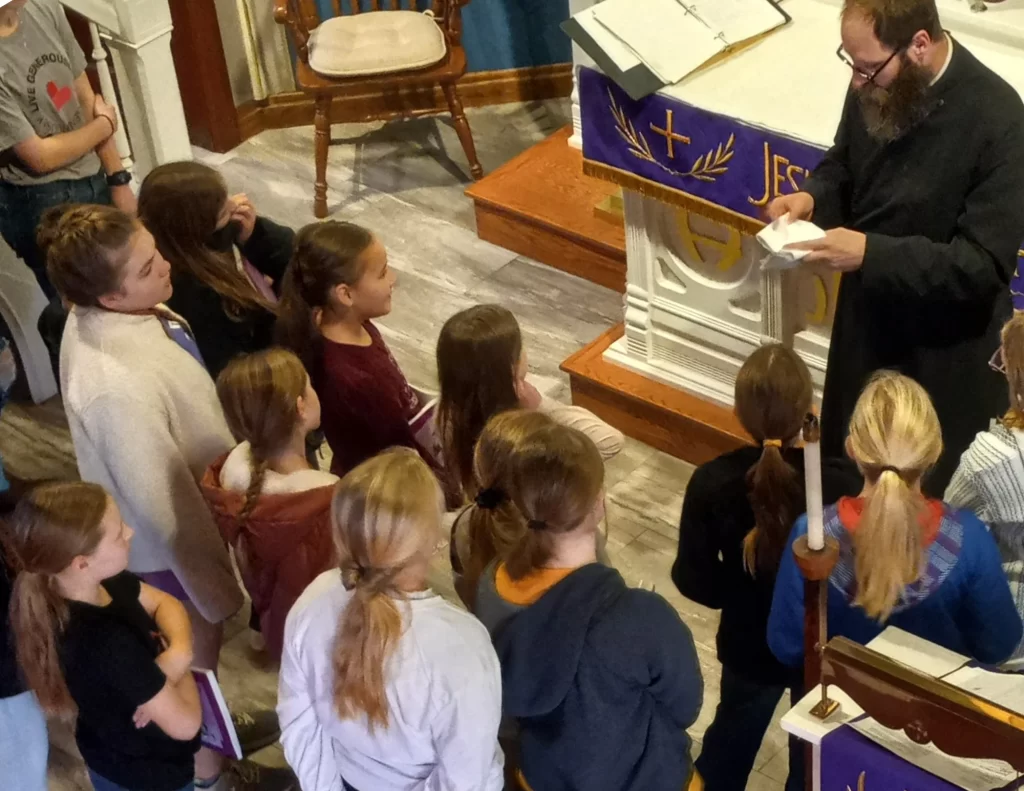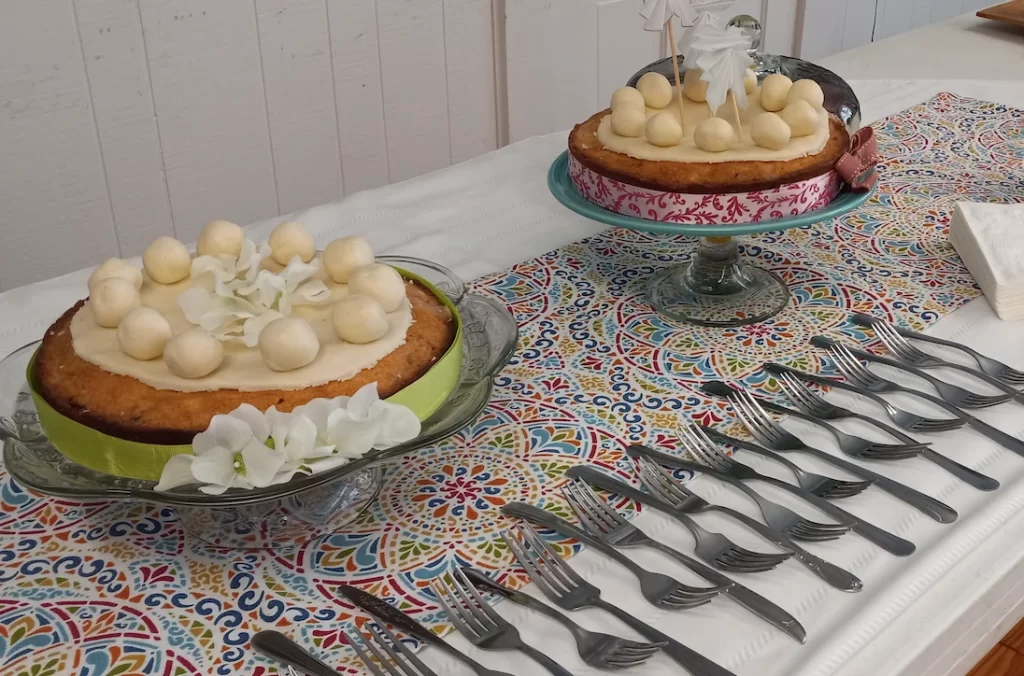At All the Household, we love exploring the ways that Lutherans bring the rhythms of the Church Year into their everyday lives. In this new interview series, we’re excited to feature a variety of LCMS members who are actively practicing Lutheran Liturgical Living in their homes. Each one we speak with will share how they centers the Church’s calendar into their daily rhythms, discuss favorite traditions they’ve embraced and learned about on their journey, and pass along any other wisdom gathered along the way.
Whether you’re just beginning to explore the tenets of Lutheran Liturgical Living or have followed the Church Year for years (and, in the case of many of you, many more years than the two of us have observed it ourselves), we hope these conversations inspire and encourage you to root your home in Christ and His gifts.
Today, we’re delighted to feature Rebekah Curtis, who shares how her household and congregation aims to honor the rich liturgical traditions we’ve been passed down in our faith tradition and how these practices are meant to deepen understanding of the faith. Let’s begin.
One more quick thing! If you enjoyed this interview, join us for an extended recorded conversation with Rebekah over on our Patreon community. This week we release a bonus interview in which she elaborates on a typical week living liturgically in her home and congregation, shares more about the Altar Guild Girls program in her congregation, elaborates upon balancing tradition with flexibility in your home and church, and more!

Rebekah Curtis is a housewife, church lady, and school mom. She has written for a variety of websites, magazines, and books, including co-authoring LadyLike. She and her husband have eight children and live in southern Illinois. She teaches at Saint Paul Lutheran School in Hamel.
Q: How do you aim to center the Church’s Calendar as part of your congregation and household?
A: I’m going to talk more about some of the things I have going on with our congregation,
particularly with the girls at my church and a neighboring congregation. A few years ago, the
pastor at that congregation started a group for the boys who serve as acolytes, so they could
have time for formal training for what they do in the chancel, and also some other things.
When they got that off the ground, I started thinking about a girls’ group that focused on Altar
Guild training, but also what our “other things” could be. And of course, the girls’ “other things”
were mercy care and hospitality. Hospitality is where the Church’s calendar is extremely
helpful in expanding the Altar Guild’s work in God’s house into an expression of that piety in
everyday life. I never have to plan a party. The occasions are given by God himself, and the
ways of observing them are handed down from the Christians who have celebrated them
before.
The Altar Guild Girls have quarterly meetings, and at each meeting I work to include a take-
home idea that relates to where we are on the church calendar. Mostly this means a treat,
since that’s what everybody wants. Like ATH does, I want to give the girls some advance
notice about what’s coming up so they can do it themselves on the right day if they’d like. So
when we met a little before Laetare Sunday, I made Laetare cakes for them to try, and gave
them all a copy of the recipe. We met again recently, and since we’re approaching the end of
the Easter season, I had an advance batch of the cookies I always make for Ascension. I also
got each of the girls a cookie cutter to go with the recipe so they could make them for their
families, or to share at church.
This is not an unfunded mandate. Getting nice things for the kids at your church to help them
live Christian lives is one of the main purposes of Thrivent grants.



Q: Can you tell us about a favorite Church holy day and/or accompanying tradition that you’ve commemorated with those around you? What did that look like and how did it help further your knowledge and understanding of the Christian faith?
A: I like using customs around some of the less-traveled holidays to help people get a stronger
handle on them. Ascension is one we’ve built up here. Our congregation observes Ascension
Eve, since we have a regular Wednesday service that catches more people than we might
have otherwise. After that Ascension service, we have an outdoor reception at our house (the
parsonage across the street). The weather is usually beautiful, we get out the tiki torches and
serve cookies cut into bird shapes, and everybody who was at the service gets a little extra
time together.
We’ve been doing this for years, and over that time, a lot of kids have come through and
learned the procedure. They now require their families to go to bird cookie church. This very
pleasant thing happens because it’s Ascension. The time we spend together around our
Lord’s gifts in the Divine Service, and then as friends and neighbors afterwards, is evidence
that we are not left as orphans, and that we have work to do beyond gazing up into heaven.
The bird cookies take a long time to make. It’s more than worth it.
Q: What resources have helped shape how you incorporate the Church’s liturgical year into your daily life?
A: Before ATH was around to coach me through these things, I relied a lot on a book called
Handbook of Christian Feasts and Customs, by Francis Weiser (a Roman Catholic). Treasury
of Daily Prayer, which is my favorite devotional book, also includes commemorations as they
fall on the calendar. The next useful thing that came my way was Pastor Weedon’s
Celebrating the Saints. Then ATH launched, which has been extremely helpful both in
reminding me what’s coming up, and suggesting ways to observe it at home and at church. I
follow on Instagram, and the website is my first stop when I need to review what’s coming up.
I’m still waiting for a Lutheran version of Weiser’s book!

Q: How do you approach liturgical living with children or others in your household?
A: I’m going to talk again about my broader household of faith. I teach at the Lutheran school of
our neighboring congregation, where my own younger kids are students. Every classroom
has the ATH calendar on the wall, and I can’t say enough good things about that. The
calendar is beautiful, and it reinforces everything we’re dong at school to establish the life of
the church in the lives of the kids. I especially like being able to show a student that today is
his name day, or that her birthday or baptism birthday coincides with something in the church
year. This is how a goofy kid gains an affinity for somebody weird like Staupitz.
Since one class I teach is literature, I make reading or copywork selections that correspond to
what’s on the church calendar. That one is easy, but Lutheran educators worth their salt talk a
lot about integrating the faith into every subject. Life by the liturgical calendar will get this
done effortlessly. Sometimes I can’t figure out how math class ended up in the Catechism or
the 16 th century again. It’s because when we needed a concrete example to practice ratios,
some kid suggested scaling up a recipe for hot cross buns for when your 13 cousins come to
visit during Holy Week. A faith-normed perspective is just programmed into Christian families.
It comes out of the kids as often as it comes from me.
Q: What encouragement would you give to someone who feels overwhelmed or unsure of how to begin observing the Church year in their home?
A: The church year was made for man, not man for the church year. This stuff will help you
where you need help! I love it when I don’t have to figure out what to cook. Church says we
eat crepes today. Eat the crepes. Also, if you’re a lousy housekeeper like I am, you always
know when to clean the porch. Ascension.


Leave a Reply